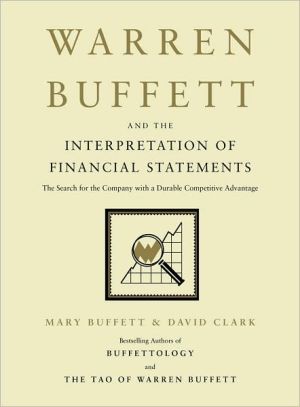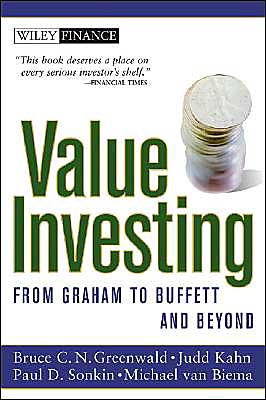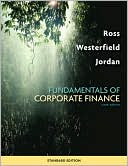Cost of Capital: Applications and Examples
Search in google:
Cost of capital estimation has long been recognized as one of the most critical elements in business valuation, capital budgeting, feasibility studies, and corporate finance decisions and is also the most difficult procedure to assess and perform. Now in its fourth edition, Cost of Capital: Applications and Examples addresses the most controversial issues and problems in estimating the cost of capital. Renowned valuation experts and authors Shannon Pratt and Roger Grabowski present both the theoretical development of cost of capital estimation and its practical application to valuation, capital budgeting, and forecasting of expected investment returns encountered in current practice. In this learning text/handy reference, Pratt and Grabowski deftly review and explore the theory of what drives¿the cost of capital, the models currently in use to estimate cost of capital, and the data available as inputs to the models to estimate cost of capital. In this thoroughly updated and comprehensive fourth edition, Cost of Capital summarizes the results and practical implications of the latest research—much of which is gleaned from unpublished academic working papers—and includes scores of formulas and elucidating examples throughout to enhance readers' insights. Pratt and Grabowski have updated their text to include a host of new material, including: A new chapter reconciling various forms of the income approach Expanded material on estimating the equity risk premium, chronicling the impact of the crisis of 2008–2010 and its impact on the cost of equity capital Expanded material on estimating the cost of debt capital and the impact of deleveraging on the debt capacity of businesses An updated chapter covering cost of capital for financial reporting under SFAS 141R, 142, and 144 (with full cross-referencing to the new FASB Accounting Codification), with examples of inferring rates of return for underlying assets from cost of capital of reporting units Expanded chapters on risk measures and their relationship to cost of capital and company-specific risk Expanded chapters on cost of capital for distressed companies Expanded discussions on the Morningstar SBBI data on supply-side equity risk premium and size premium Updated chapter on the cost of capital in transfer pricing related to the valuation of intangible assets under the new cost-sharing regulations The landmark book corporate treasurers, business appraisers, CPAs, and valuation experts have come to rely on, Cost of Capital lays out the basic tools to use immediately when estimating cost of capital or when reviewing an estimate. This dynamic author team also analyzes criticism of major models for developing estimates of the cost of capital in use today, and also presents procedures for a number of alternative models. This definitive text is an indispensable reference tool for professional valuation practitioners as well as attorneys and judges, investment bankers, CFOs, academicians and students, and CPAs.
About the AuthorsForewordPrefaceAcknowledgmentsNotation System and Abbreviations Used in This BookPART ONE Cost of Capital BasicsChapter 1 Defining Cost of Capital 3Chapter 2 Introduction to Cost of Capital Applications: Valuation and Project Selection 10Chapter 3 Net Cash Flow: Preferred Measure of Economic Income 16Chapter 4 Discounting versus Capitalizing 26Chapter 5 Relationship between Risk and the Cost of Capital 45Chapter 6 Cost Components of a Business's Capital Structure 61PART TWO Estimating the Cost of Equity Capital and the Overall Cost of CapitalChapter 7 Build-up Method 87Chapter 8 Capital Asset Pricing Model 103Chapter 9 Equity Risk Premium 115Appendix 9A Realized Risk Premium Approach and Other Sources of ERP Estimates 146Chapter 10 Beta: Differing Definitions and Estimates 159Chapter 11 Unlevering and Levering Equity Betas 185Chapter 12 Criticism of CAPM and Beta versus Other Risk Measures 208Chapter 13 Size Effect 232Chapter 14 Criticisms of the Size Effect 262Appendix 14A Other Data Issues Regarding the Size Effect 279Chapter 15 Company-specific Risk 287Chapter 16 Distressed Businesses 313Chapter 17 Other Methods of Estimating the Cost of Equity Capital 347Chapter 18 Weighted Average Cost of Capital 369Chapter 19 Global Cost of Capital Models 403Chapter 20 Using Morningstar Cost of Capital Data 428PART THREE Corporate Finance Officers: Using Cost of Capital DataChapter 21 Capital Budgeting and Feasibility Studies 461Chapter 22 Cost of Capital for Divisions and Reporting Units 468Chapter 23 Cost of Capital for Fair Value Reporting of Intangible Assets 497Chapter 24 Cost of Capital in Evaluating Mergers and Acquisitions 518Chapter 25 Cost of Capital in Transfer Pricing 531Chapter 26 Central Role of Cost of Capital in Economic Value Added 558PART FOUR Other Cost of Capital ConsiderationsChapter 27 Handling Discounts for Lack of Marketability and Liquidity for Minority Interests in Operating Businesses 571Chapter 28 The Private Company Discount for Operating Businesses 587Chapter 29 Cost of Capital of Interests in Pass-through Entities 597Chapter 30 Relationship between Risk and Returns in Venture Capital and Private Equity Investments 611Chapter 31 Minority versus Control Implications of Cost of Capital Data 624Chapter 32 How Cost of Capital Relates to the Excess Earnings Method of Valuation 634Chapter 33 Adjusting the Discount Rate to Alternative Economic Measures 642Chapter 34 Estimating Net Cash Flows 647PART FIVE Advice to PractitionersChapter 35 Common Errors in Estimation and Use of Cost of Capital 669Chapter 36 Dealing with Cost of Capital Issues 684Appendix I Bibliography 697Appendix II Data Resources 725Appendix III International Glossary of Business Valuation Terms 738Index 747








